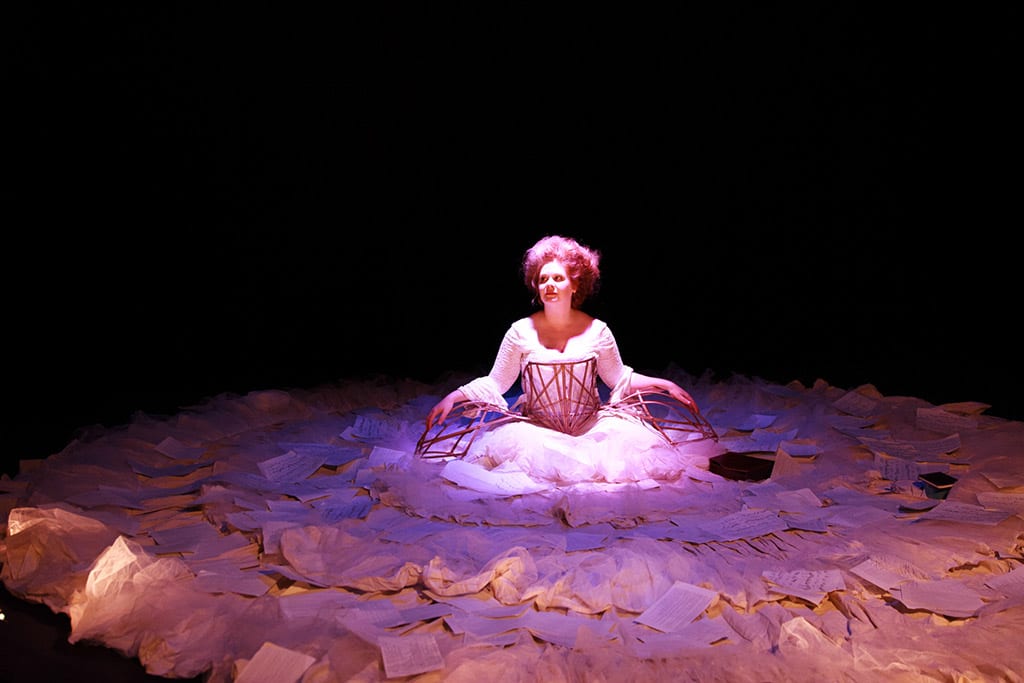This play is a gift to theatergoers. The piece channels the life of Mozart’s seemingly forgotten sister Nannerl. She was by all accounts a gifted composer and musician who was hamstrung by the fact that she was, well, a girl.
I don’t typically start off by referencing set and costume, but in this case they are one and the same. Designed by Magdalena Dabrowska and Miodrag Guberinic, the set is essentially Nannerl’s dress–a glorious white skirt interlaced with ruffles from which any prop needed can be retrieved. Littered with letters and newspaper articles to which Nannerl frequently refers, it covers the stage.
The story begins with the talented child being taught the harpsichord by her father and sneaking into concerts in the family’s home. Boom! Along comes the screaming baby brother, who at the age of three begins playing. What is striking, funny and heartbreaking through the entire piece, is that in spite of the jealousy and rivalry on the part of Nannerl, these siblings have an unshakeable affection for each other. The young sister learns to quiet her brother by whistling to him. He learns to whistle back, and they do this throughout their lives.
Jody Chrisopherson as Miss Mozart is a wonder. She is at turns gamine, churlish, heartbreaking, and utterly charming. She essentially gives us her autobiography dressed in a chemise and bloomers from the center of her dress.
The audience follows the young siblings and their father throughout the great cities of Europe, touring to wild acclaim. Always the admiring reviews speak of her virtuosity and her brother’s genius. Nannerl frequently, resignedly and sadly tells us that she is only her brother’s pupil. The tutoring and care are always focused on her brother.
Our heroine’s life turns when it is decided that she is now of a marriageable age and would need her own hotel room, which would be too expensive. This lovely bright young woman is then consigned to her home in Salzburg to learn household accounting and needlework. Christopherson perfectly conveys her adolescent frustration in a back-and-forth series of letters to and from her brother. He tells her of the glories of opera and symphony and culture. She replies that today it was sunny, and we went for a walk. Then she replies that it was slightly less sunny and she went to church with her mother.
We follow Nannerl through the fame of her brother, her adoration of an unmarried musician, Marian Martinez, a wealthy, unmarried, and very talented musician who is invited to play concerts gratis because she has the money to do so. Her brother’s marriage to Costanza, a bit of a flibbertigibbet, and his childish adult behavior are bones of contention for all. Then a loveless lonely marriage of necessity.
This is a play that will make you feel. Following this funny, hopeful, talented woman face obstacles that are culturally and financially insurmountable with humor, rage, and despair will bring you to tears more than once. We are left wondering what heights she would have reached in a different era.
Janice Orlandi did a great job coaching period body language, and the lighting design by Joshua Rose, in a limited space, is unobtrusive and completely complementary to the production.
The space itself is wonderfully intimate, though not for the vertically challenged. It is up three very narrow flights of stairs, but well worth the hike.

